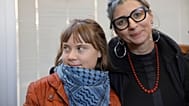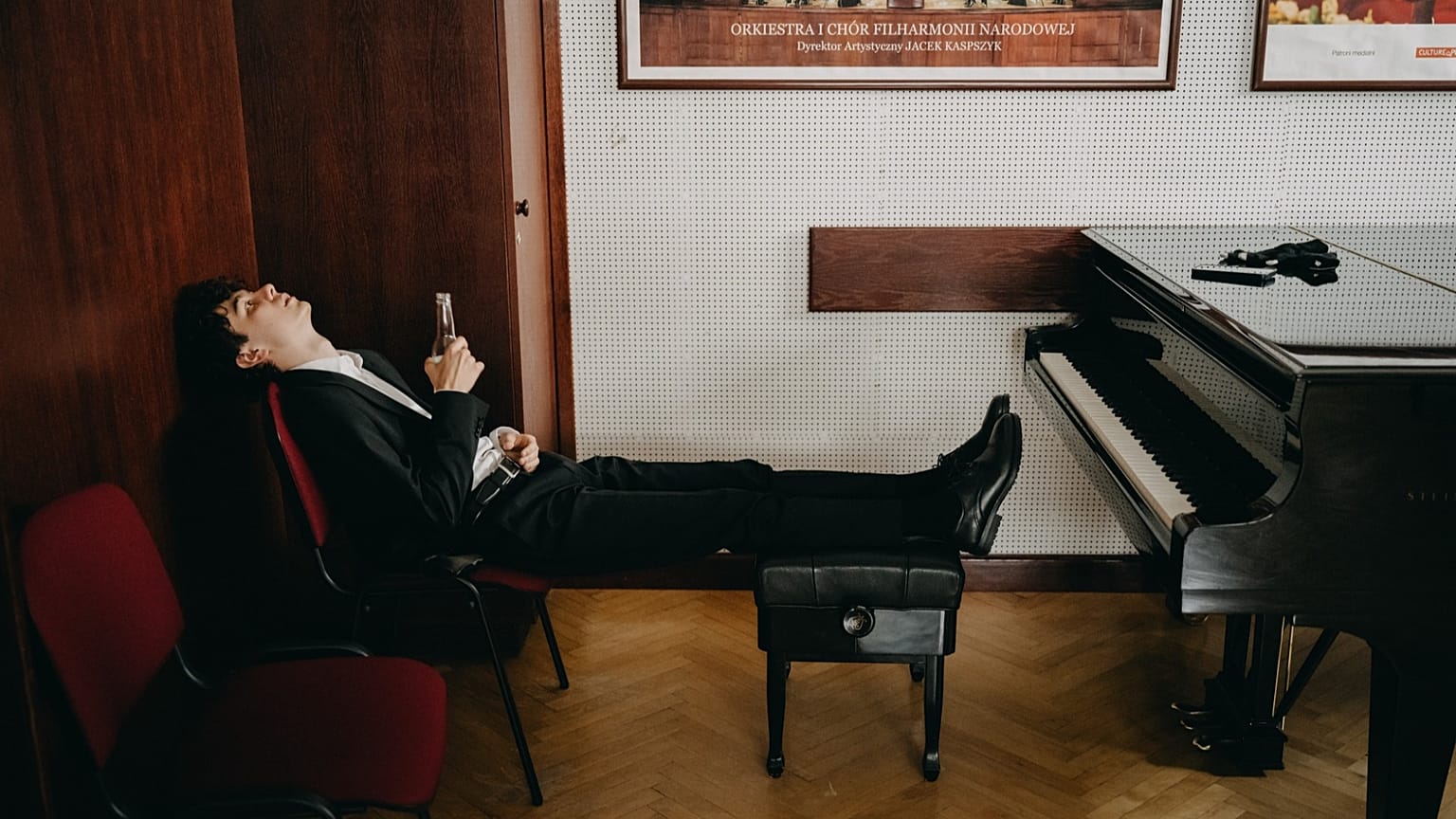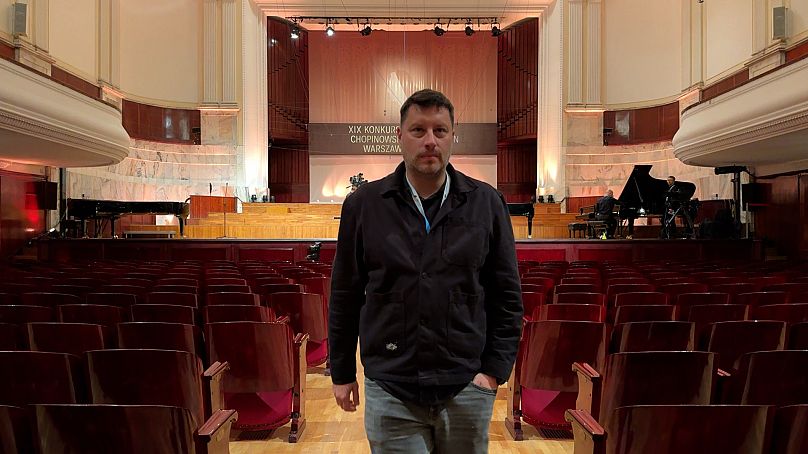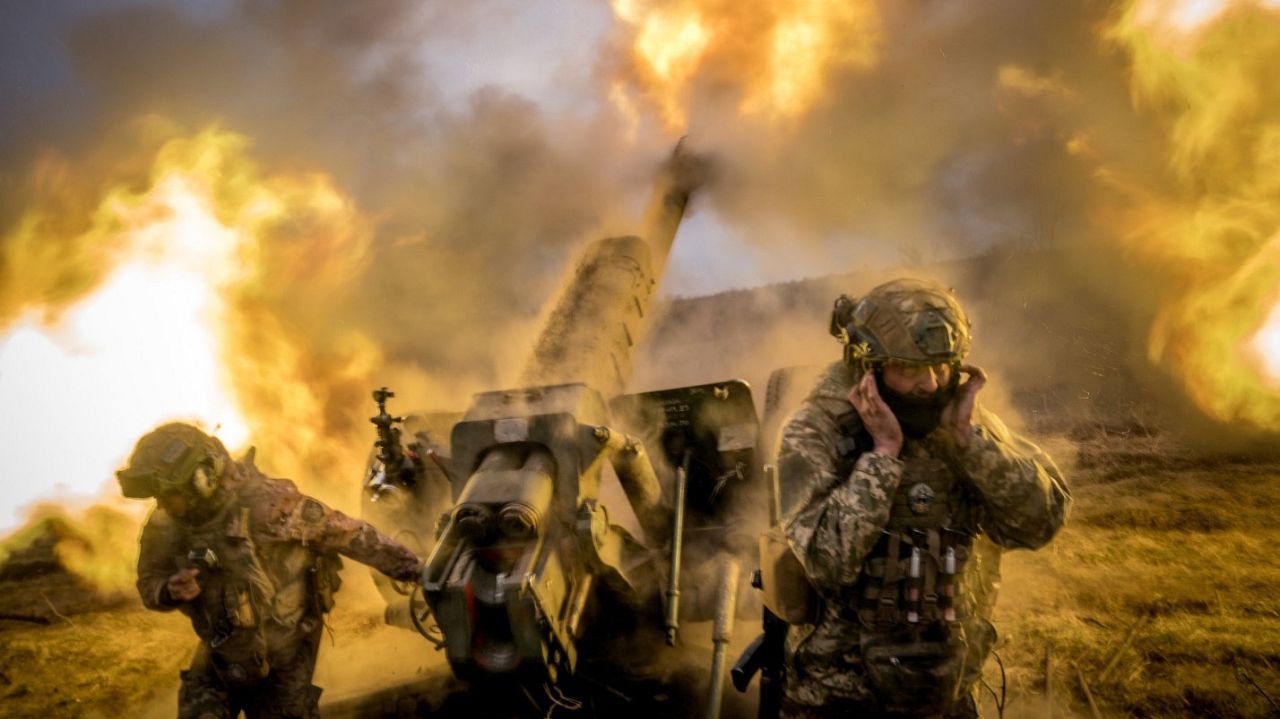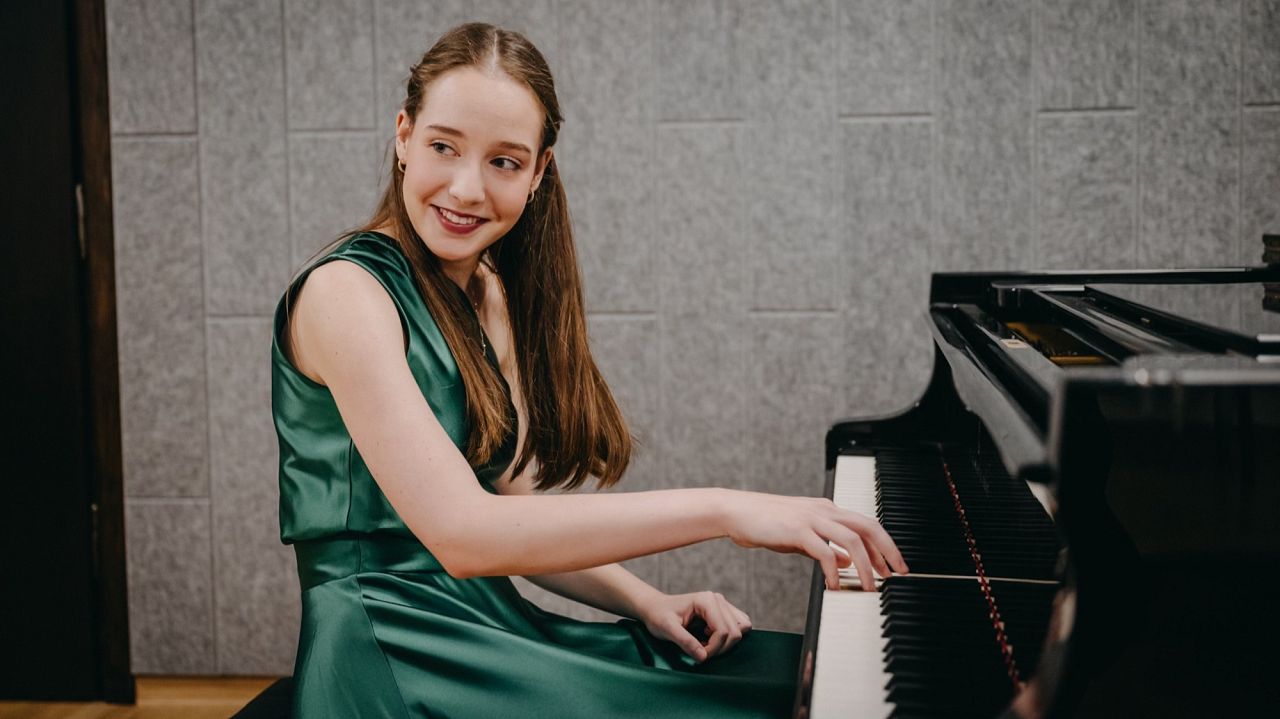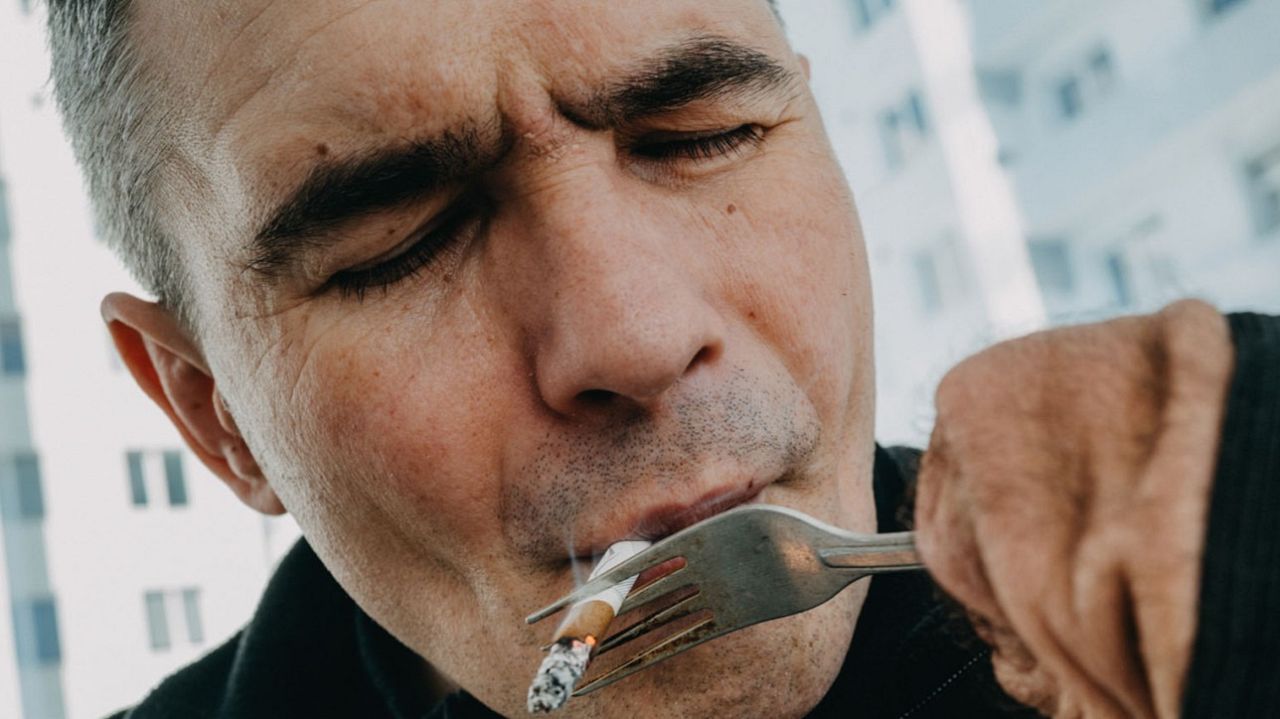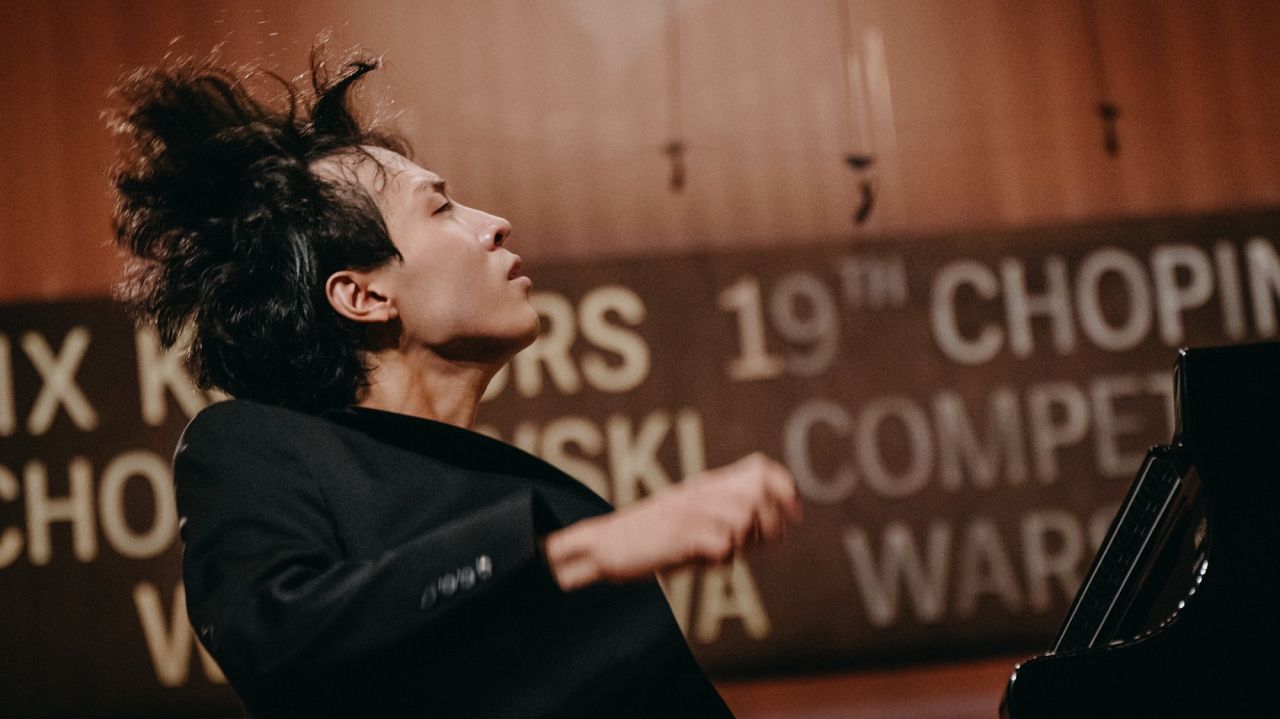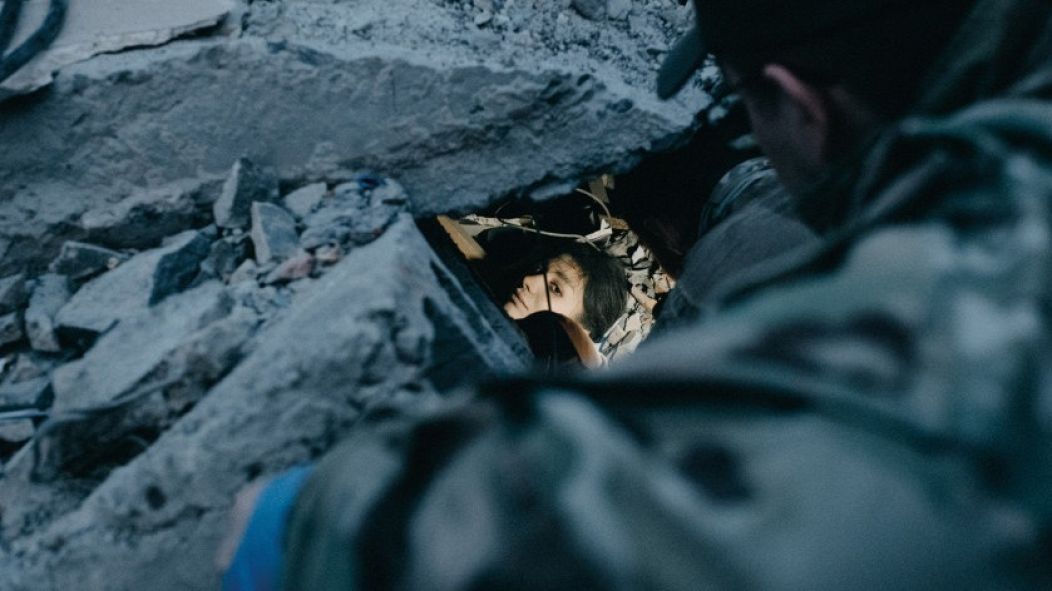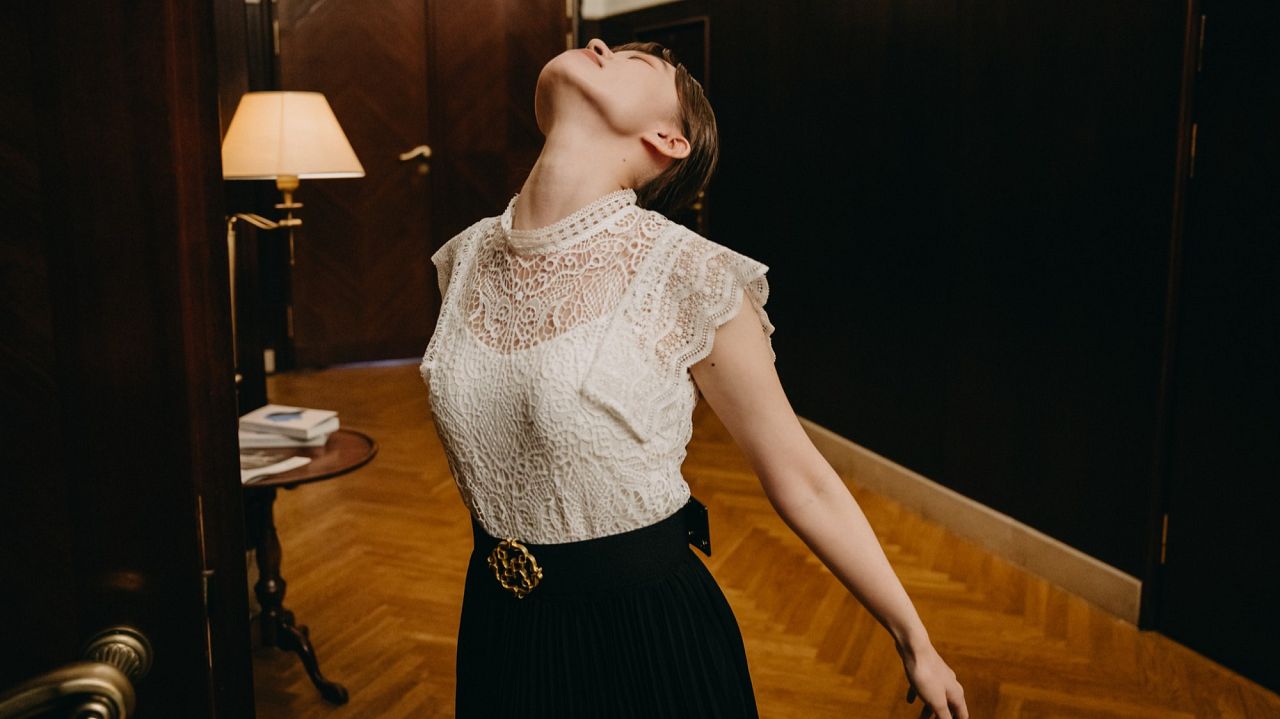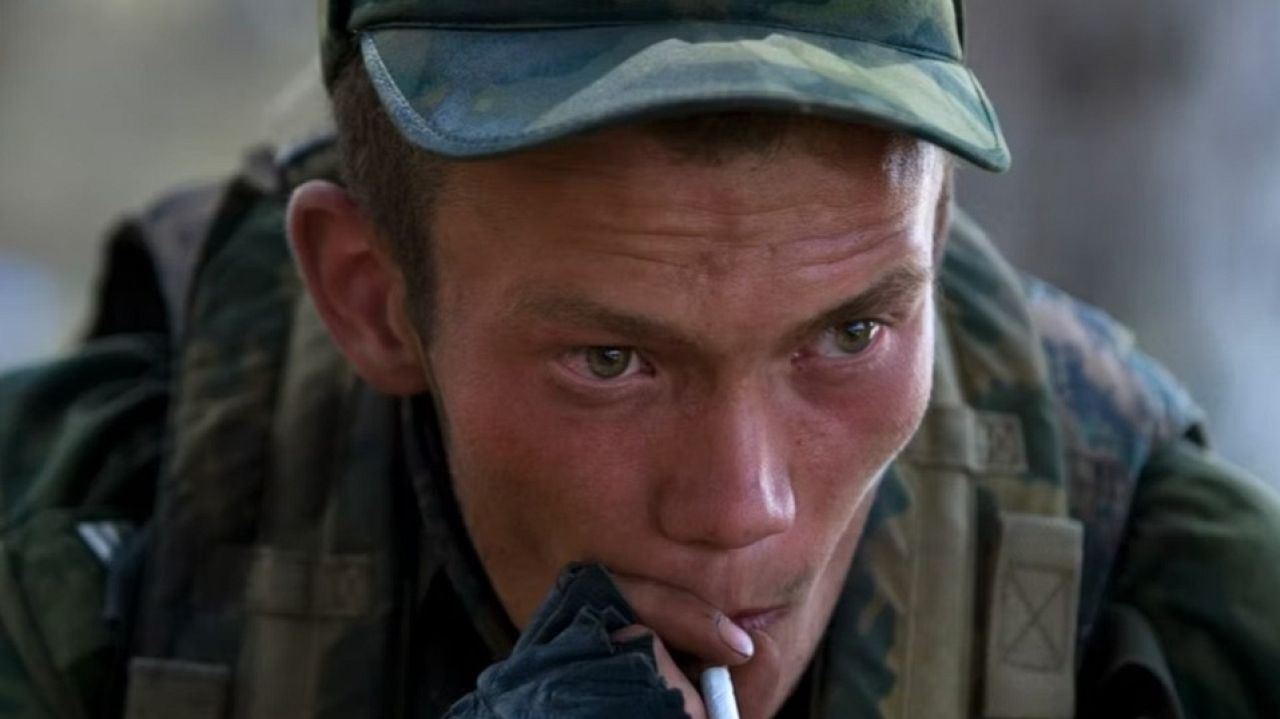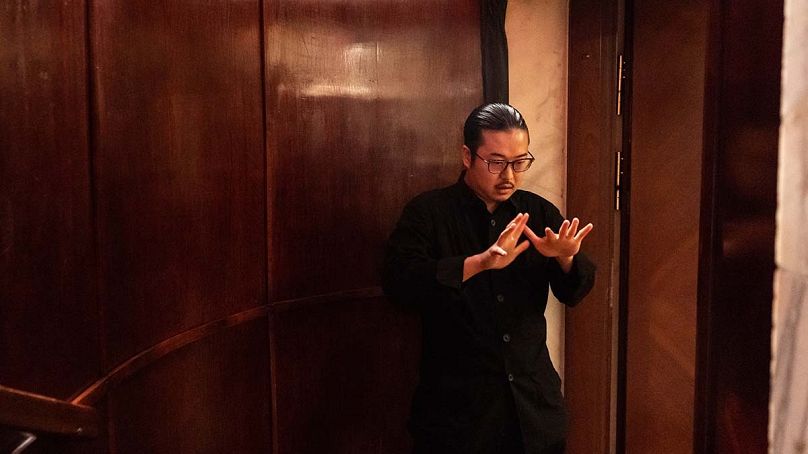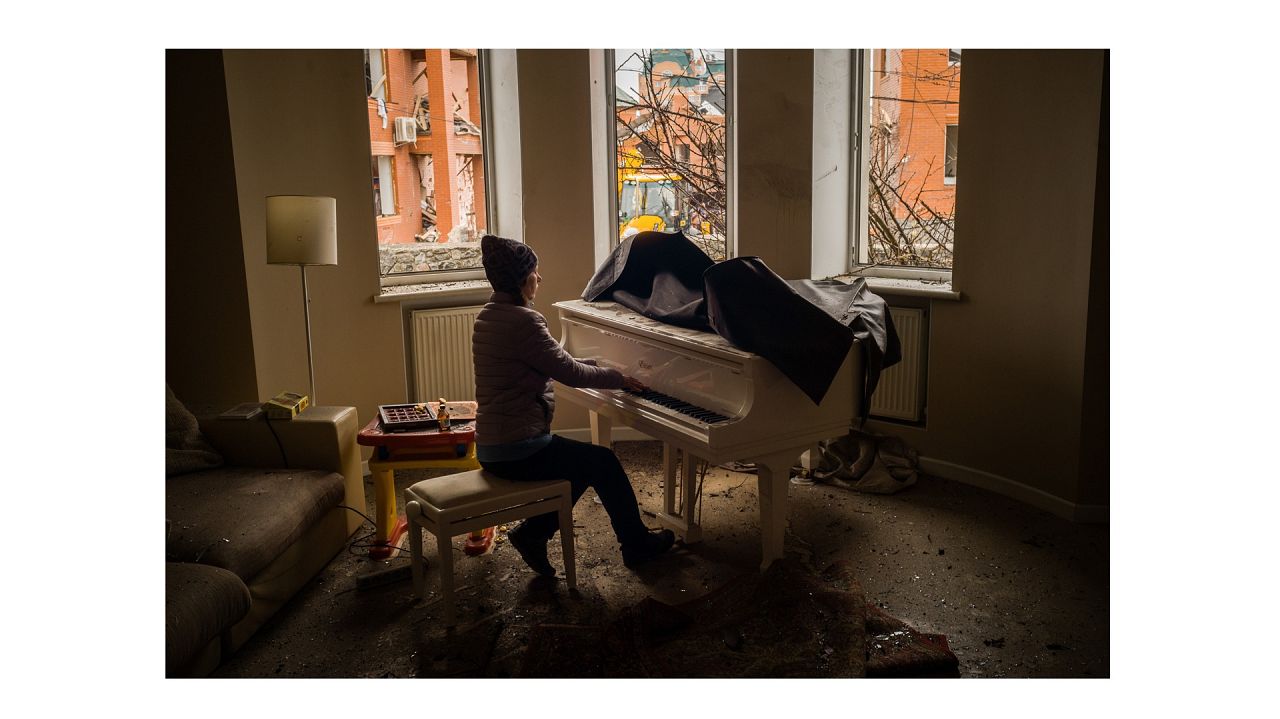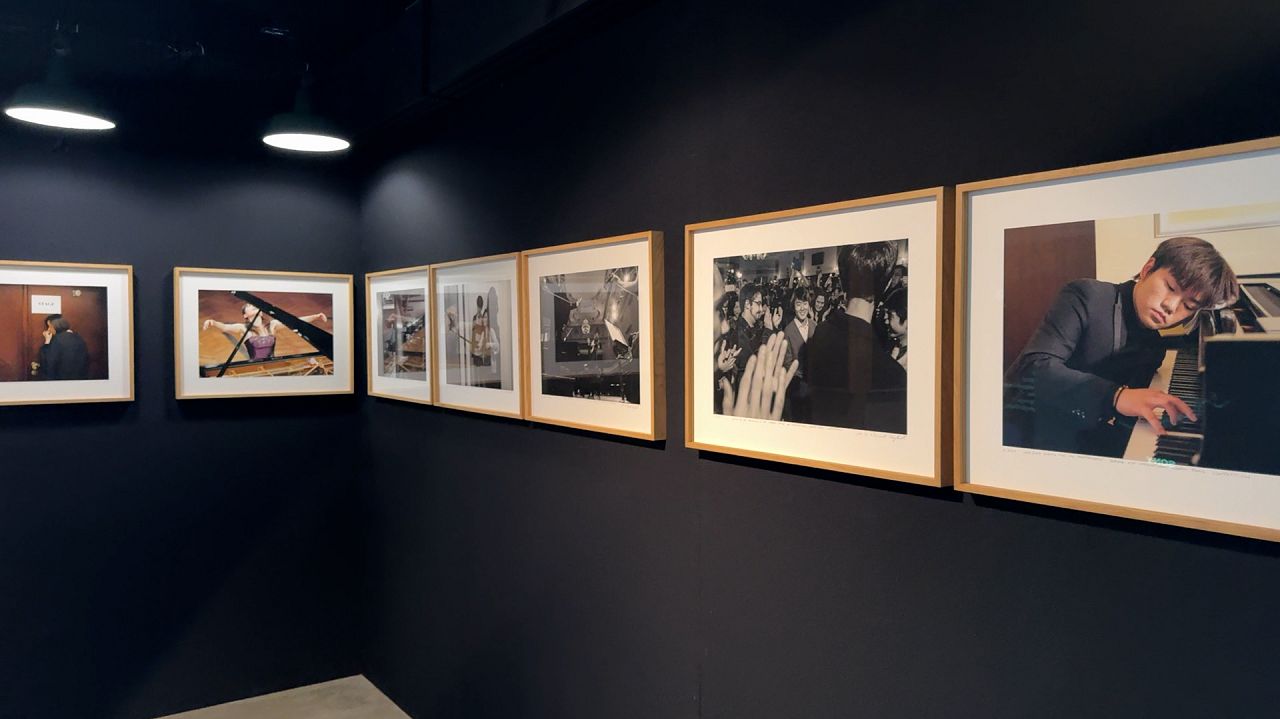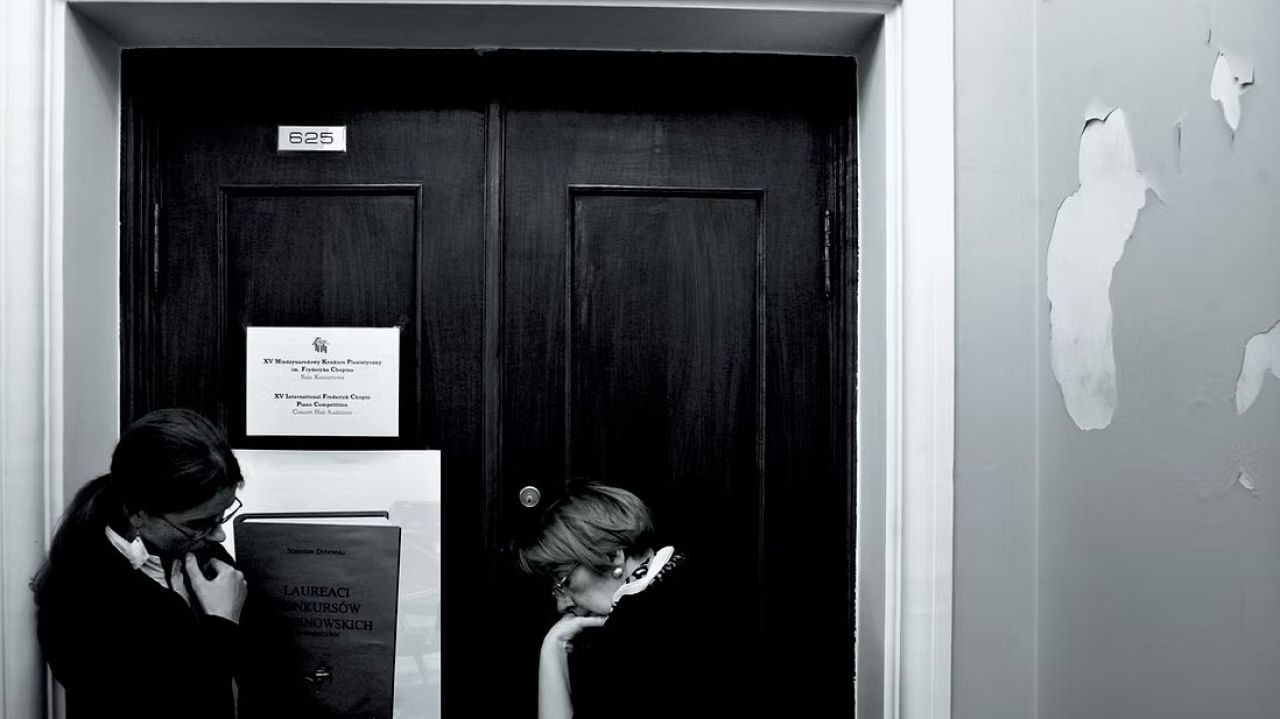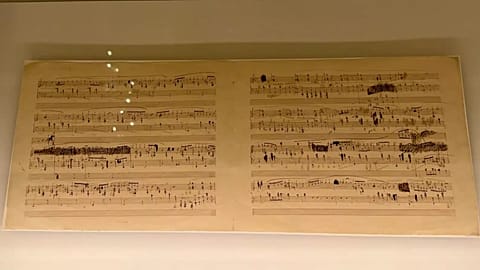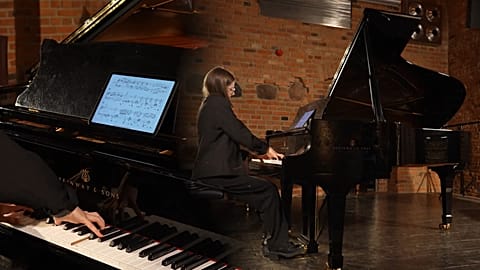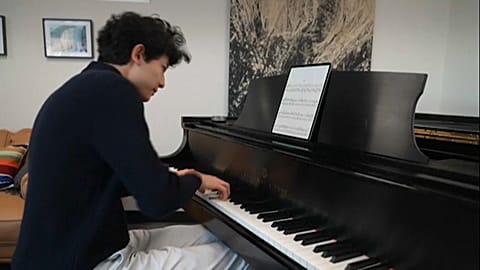For two decades now, a certain important pretext has drawn photojournalist Wojciech Grzędziński away from the front line and traditionally leads him to Warsaw - the Chopin International Piano Competition. But what does Chopin have to do with war and conflict?
Every five years, since 1927, Warsaw has become the classical music capital of the world thanks to the Fryderyk Chopin International Piano Competition**.** It is an event that attracts the eyes (or rather the ears) of classical music lovers from all over the world.
For young pianists, it is a watershed moment for which they often prepare since early childhood. Victory is finally a chance for a worldwide career, a place on the most important music stages and a place in the history of music.
Among those who have been documenting this event for two decades is Wojciech Grzędziński - a Polish photojournalist whose work is particularly defined by two distant leitmotifs: war and Chopin.
Capturing worlds apart
Wojciech Grzędziński, winner of prestigious awards such as the World Press Photo, Grand Press Photo, Visa d'Or or Sony World Photography Awards, has for years been reporting on armed conflicts in Lebanon, Georgia, South Sudan and Afghanistan, and has spent may months in Ukraine since the start of Russia's full-scale invasion of the country.
Every five years, however, he is drawn to Warsaw by the Chopin Competition, of which he is the official photographer. The organisers of the event, known for their rigorous selection of journalists, trust his eye.
How is it possible that war and Chopin are particular areas of his work?
"I have never felt myself to be exclusively a war photojournalist," - says Grzędziński. 'Paradoxically, I photographed the first Chopin Competition a year before I went to my first conflict. These two worlds - war and music - are intertwined in my work. The competition is not a therapy or an escape for me, but a completely different area of photographic activity, extremely different from the front."
For Grzędzinski, the Chopin Competition 'is a marker in time, an anchor in reality. No matter what happens in the world, he has been returning to Warsaw for this event for 20 years.
Photographing the war and the Chopin Competition may seem extremely distant, but Grzędziński sees a common denominator in them.
"For me, the key to photography is a human being in an extreme moment of life," Grzędziński explains as we chat at Warsaw's National Philharmonic Hall during a short break in the several-hour-long auditions.
"There is a stage in front of us where all the pianists who come here to face and try their hand at the competition are placed in an absolutely extreme situation. But also to measure themselves against themselves, against other countries, to be judged and by the jury, by the audience. This is a borderline situation and the same, I feel, is the extreme of a war situation. Of course, the risks are different, but the level of emotion accompanying these events is paradoxically very similar."
Grzędziński has been photographing the Chopin Competition since 2005, when, as he admits, he found himself backstage at the Philharmonic by accident.
"I was a photographer for 'Rzeczpospolita', which is still the competition's media patron. After a difficult trip to Belarus, where I contracted various illnesses, my boss Michał Sadowski said: 'Go to the Chopin Competition, you'll rest there'. It's perverse, considering how much work there is at the competition," he recalls with a smile.
At the time, he liked his photographs, they changed the way the competition was shown.
"They were a bit different. We broke this thing of showing pianists only from the stage. We started to sneak into the backstage area. So as to show more and also show the difficult life of a musician. Because it is a life full of sacrifices. Hours of lonely rehearsals, training. It has quite a lot in common with the life of an athlete, because these are hours of practice. Often alone in the hall. It's worth showing that."
Behind the scenes of the Chopin Competition
This year, 84 participants from 18 countries entered the 19th edition of the competition, including 28 from China, 13 from Poland and 13 from Japan. Forty pianists, including four Poles, made it to the second stage. The winner will announced in the final, which will run from 18 to 20 October.
The organisers of the Chopin competition want to provide the participants with the best possible conditions for concentration. That is why Grzędziński has unrestricted access to the backstage area.
The photographs allow us to feel the atmosphere of the competition, but also to see how music brings people together across borders. People who communicate with each other using the language of études, waltzes, nocturnes and preludes - by Chopin, of course.
But what does he observe there? What scenes, what atmosphere?
"Each of this year's 84 pianists is an absolute individual. There are 16-year-olds and almost 30-year-olds, each with a different baggage of experience. It is interesting to watch how they deal with stress. Just now, Yehuda Prokopovich was playing a character who was riddled with stress. Others even sink into themselves, trying to cut themselves off from the reality around them."
Grzędziński emphasises that what fascinates him about the people he photographs is their passion. Entering the competition is preceded not only by preliminaries, but also by years of practice.
"Some people give their first concerts at the age of four! We are talking about a situation where a person in their twenties already has 15 years of professional experience! It is unbelievable to meet such people and interact with them."
When war meets Chopin
Sometimes Grzędziński's two worlds - war and Chopin - merge and surprisingly intermingle. And literally. One such event earned him the Photograph of the Year award at Grand Press Photo 2022.
"It was probably on the fifth of March 2022. A bomb fell on Biala Cerkiew, a town about 80 kilometres south of Kyiv. Suddenly there was an explosion in the town where we were. Kyiv was encircled on three sides by the Russians. We went to the scene and it turned out that a bomb or a rocket had exploded between the single-family houses - to this day I don't know what it was exactly', Grzędziński recalls.
One of the houses that suffered mightily was that of Irina Maniukina, a 48-year-old pianist at the time.
"There was a burnt facade there, the door was kicked down, everything was flying. Her daughter was also slightly injured. Luckily it was only scratches on the skin. And so we walked around that house. And she [Irina] at one point walks up to the piano, takes the protective cover off it and starts playing. On a completely out of tune instrument, in a room with broken windows, she starts playing Chopin. And I had shivers at that moment. Because these are my two photographic worlds... Suddenly, they intersected in one place and at one moment".
The Fryderyk Chopin International Piano Competition is accompanied by numerous events, including an exhibition of photographs by Wojciech Grzędziński from the four previous editions of the competition. It can be seen in Warsaw's Hala Koszyki until 22 October 2025 (admission free).


